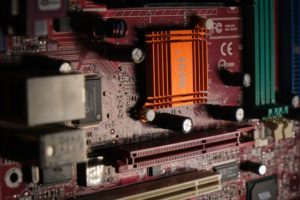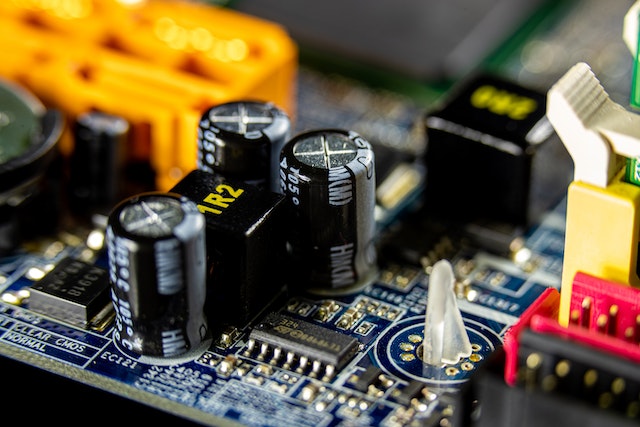Gallium Arsenide: A Superior Semiconductor Material
In the sprawling expanse of semiconductor technology, Gallium Arsenide (GaAs), a III-V classified semiconductor, is causing ripples. It stands as a promising contender to Silicon – the usual suspect in this fascinating world of semiconductors. The unique characteristics and attributes GaAs possess place it on a high pedestal for numerous applications within electronics and photonics.

A noteworthy attribute that sets GaAs apart lies hidden in its energy band gap. A significantly wider energy band gap enables gallium arsenide to operate at frequencies higher than silicon-based semiconductors can reach, thereby facilitating swifter device performance. This characteristic propels GaAs devices into being especially valuable in high-frequency application arenas such as satellite communication systems and radar operations where speed holds absolute supremacy.
Nevertheless, every coin has two sides and so does the material used within the scientific and technological landscape. There exist drawbacks linked with GaAs wafers too; one glaring issue relates to their production cost which tends to outweigh that of manufacturing silicon wafers due to intricacies entwined during fabrication procedures. Even though this disadvantage looms large, many are convinced that gallium arsenide’s benefits – including superior electron mobility coupled with commendable thermal stability – overpower these hurdles thus cementing its stand as an extraordinary semiconductor material poised for future advancements.
“The Comparative Analysis between Gallium Arsenide and Silicon”
Attempting to navigate the labyrinth of semiconductor materials utilized in the electronics industry, Gallium Arsenide (GaAs) and Silicon emerge as prominent constituents. Each, a Pandora’s box of unique charms and potential pitfalls that cater to specific applications.

Take for instance GaAs; it boasts a direct band gap – an attribute that positions it perfectly for optical devices like laser diodes and solar cells. This singular advantage places GaAs on a different pedestal from silicon whose indirect band gap leaves it less competent in these domains.
In juxtaposition with silicon-based contraptions, those derived from GaAs possess high electron mobility which empowers them to function at escalated frequencies—rendering them apt choices for microwave circuits. The prowess of GaAs doesn’t halt here but extends into the terahertz spectrum revealing new vistas in communication systems and integrated circuit design where velocity reigns supreme. To add another feather to its cap, within a gaas substrate, thermal conductivity surpasses that found in silicon wafers—providing superior heat dissipation inside electronic parts such as transistors resulting in enhanced dependability under rigorous operating conditions.
However, despite these boons conferred by GAAS there lurks certain drawbacks overshadowing its precedence over silicon. Its Achilles’ heel lies hidden within its oxide quality capable of compromising device stability—a factor not forgotten easily when pondering upon alternatives between GAAS or Silicon based semiconductors.
Furthermore, while some factions might lean towards GAAS due to its enticing properties like high electron mobility and suitability for high-frequency operations; others are swayed by Silicon’s lower cost—an element that cannot be overlooked given the cutthroat competition pervading the semiconductor industry market dynamics.
“Exploring the Unique Features of GaAs Wafers”
The distinct attributes of GaAs wafers find their roots in the exceptional traits of Gallium Arsenide, a complex compound that comes into being when gallium and arsenic are melded together. This particular material is a popular choice for crafting various semiconductor devices due to its expansive energy band gap. Such an attribute makes it an effective solution for applications demanding high-frequency operations or resistance against radiation damage.
In juxtaposition with silicon chips – currently reigning supreme in the market – GaAs presents numerous benefits such as increased electron mobility and saturation velocity. These qualities facilitate quicker signal transmission and enhanced performance at elevated frequencies.
A surge of interest is apparent concerning the application of GaAs technology across diverse industries, fueled by these advantages. For example, Indium Gallium Arsenide sees frequent use in solar cells (GaAs cells) and infrared detectors owing to its capability to operate efficiently under severe conditions like intense heat or cold. Additionally, Monolithic Microwave Integrated Circuits (MMICs) often feature GaAs circuitry primarily because it can perform effectively at microwave frequencies where other materials falter.
However, despite these upper hands that Gallium Arsenide holds over Silicon Germanium or Silicon Carbide semiconductors, certain drawbacks also exist associated with using GaAS; cost implications and intricacy related to manufacturing processes are among those disadvantages.
Another aspect worth noting about this material lies in how each gallium atom forms covalent bonds with an arsenic atom resulting in a crystalline structure which significantly impacts its unique electrical properties positively. The broad energy chasm between valence bands facilitates free electrons’ movement leading to swift switching speeds – a vital element making GaAS based devices apt for telecommunications equipment amongst others realms dependent on sophisticated semiconductor technology.
“Diving Into the World of GaAs Devices”
The III-V direct band gap semiconductor, Gallium Arsenide (GaAs), has been carving out a niche in the semiconductor market. Its supremacy over silicon, the more commonly used semiconductor material, is due to its remarkable attributes. GaAs possesses distinct optical properties and an impressive capacity for electrical signal transmission that make it highly suitable for various applications.
An exceptional characteristic of GaAs that distinguishes it from other semiconductors is its zinc blende crystal structure. This unique structure enables GaAs devices to function at high frequencies without any compromise on their efficiency.
Indeed, a single-crystal GaAs substrate might be costlier than those made of silicon; however, the performance benefits delivered by this compound semiconductor effectively balance out its higher price tag. For instance, owing to their extraordinary performance under extreme conditions, circuits incorporating GaAS find extensive use in mobile phones and other communication devices – providing significant power-saving advantages.
In addition to this, elements gallium and arsenic are found more abundantly compared with indium which is utilized in other compound semiconductors like InP or InSb. Therefore making GAAS an excellent substrate choice for several electronic applications.
Moreover, GaAS LEDs have started giving traditional light sources a run for their money due to their energy efficiency and durability. Furthermore Aluminium Gallium Arsenide (AlGaAs) another variant of GAAS finds widespread application in solar arrays because of its ability to absorb a wider spectrum of sunlight as opposed to silicon-based photovoltaic cells.
This makes GAAS supremely fit for space applications where reliability and efficiency take precedence even though Silicon may come across as a cheaper alternative material-wise.
“Unpacking the Energy Band Gap of GaAs”
In the realm of the semiconductor industry, silicon has reigned supreme for a long time. Its supremacy is due to its readily available status and the benefit of silicon dioxide which serves as a natural barrier separating devices and circuits. However, GaAs comes with certain restrictions that make it unsuitable for specific applications. In contrast to silicon, GaAs is a direct band gap material possessing wider energy band gap features enabling it to function at higher frequencies. This trait makes GaAs perfect for high-frequency applications such as microwave frequency appliances.
Gallium Arsenide (GaAs), a compound semiconductor, exhibits a zinc blende crystal structure identical to diamond structures present in Silicon and Germanium but differs when considering covalent radii and electronegativity. Pure GaAs boasts high resistance against radiation damage – an attribute making it especially valuable in space technology where heavy ionizing radiation exposure can cause other semiconductors’ performance degradation. Such superior properties are enticing more industries towards employing this material over silicon counterparts regardless of cost implications.
However, GaAs offers lower thermal conductivity compared to Silicon; hence heat from active regions cannot be dispersed easily leading potentially damaging hot spots if not addressed properly during design phase. On the bright side though, one major advantage Gallium Aridenide presents lies within its electronic characteristics – increased electron mobility allows speedy operation; reduced noise ensures enhanced signal quality while direct bandgap supports efficient light emission resulting in its widespread use in optoelectronic applications like LEDs and Laser diodes among others.




Comments are closed.